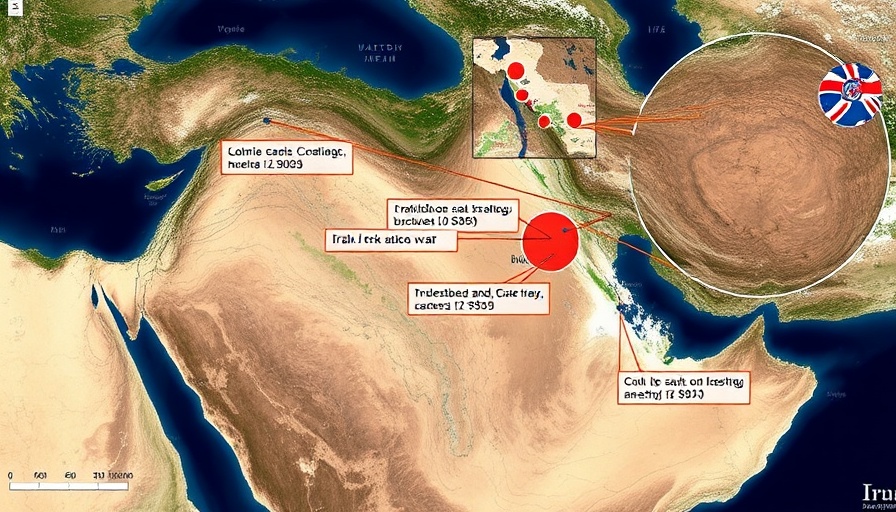
Unveiling the Nuclear Landscape: A Geopolitical Perspective
The escalating tensions surrounding Iran’s nuclear capabilities have drawn significant international attention, particularly in the context of U.S. military strategy. Maps revealing Iran's three primary nuclear sites have been at the forefront of discussions on potential military action by the U.S., indicating not just locations but the broader implications for global security.
Understanding Nuclear Capability: The Key Sites
According to various military assessments, Iran's nuclear program encompasses three critical locations: Natanz, Fordow, and Arak. Each of these sites plays a pivotal role in Iran's nuclear ambitions, including uranium enrichment and plutonium production. Knowing the geographical significance of these sites helps contextualize the stakes involved in any military consideration.
The Ramifications of Potential Military Action
Selecting these sites for potential airstrikes poses a range of risks—not only to U.S. personnel involved but to neighboring countries and wider regions that could experience fallout from such strikes. The delicate balance of power in the Middle East could be tipped, leading to broader conflict, and negatively impacting civilian populations in Iran.
Past Precedents: Lessons on Military Interventions
Historically, military interventions involving similar strategic targets have left lasting scars on the geopolitical landscape. The bombings of Iraq’s Osirak nuclear reactor in 1981 provide a parallel, illustrating the possible international backlash and the mobilization of sympathies towards the targeted nation. These precedents suggest caution must be exercised to avoid repeating mistakes from the past.
Regional Responses: The Iranian Perspective
As the threat of U.S. bombers looms over these nuclear sites, Iran has vehemently condemned any talks of military action. Iranian officials assert their right to develop their nuclear program, framing it as essential for national security. This tension highlights a critical point: how military actions are perceived by affected nations can complicate future negotiations and diplomatic relations.
The Influence of Global Politics
Global political dynamics also play a fundamental role in shaping responses to the nuclear situation in Iran. With countries like Russia and China vocally opposing U.S. interventions, the potential for a multi-national response adds another layer of complexity. It’s a reminder that any military action must consider these global alliances and the potential for creating new adversarial relationships.
Looking Forward: Economic Implications
The looming threat of military action against Iran's nuclear installations could have several economic ramifications, not just in Iran but across international markets. Geopolitical uncertainties tend to disrupt trade flows, particularly in oil markets, where prices may fluctuate based on perceived risks of conflict. Furthermore, the potential for sanctions and economic consequences in affected regions can lead to disruptions in local businesses and innovations.
Conclusion: The Call for Diplomacy and Caution
As the situation continues to unfold, the global community is urged to advocate for diplomatic solutions rather than military options. Fostering dialogue and collaboration could yield more sustainable outcomes that respect international norms and security concerns. For those observing the intricacies of U.S.-Iran relations, understanding the implications of military strategies on local economies and international politics is crucial.
In these precarious times, it becomes imperative for businesses and entrepreneurs to keep an eye on market shifts driven by geopolitical events. The situation in Iran serves as a potent reminder of how intertwined international diplomacy and local business landscapes can be, emphasizing the need for strategic foresight in an unpredictable world.
 Add Row
Add Row  Add
Add 



Write A Comment